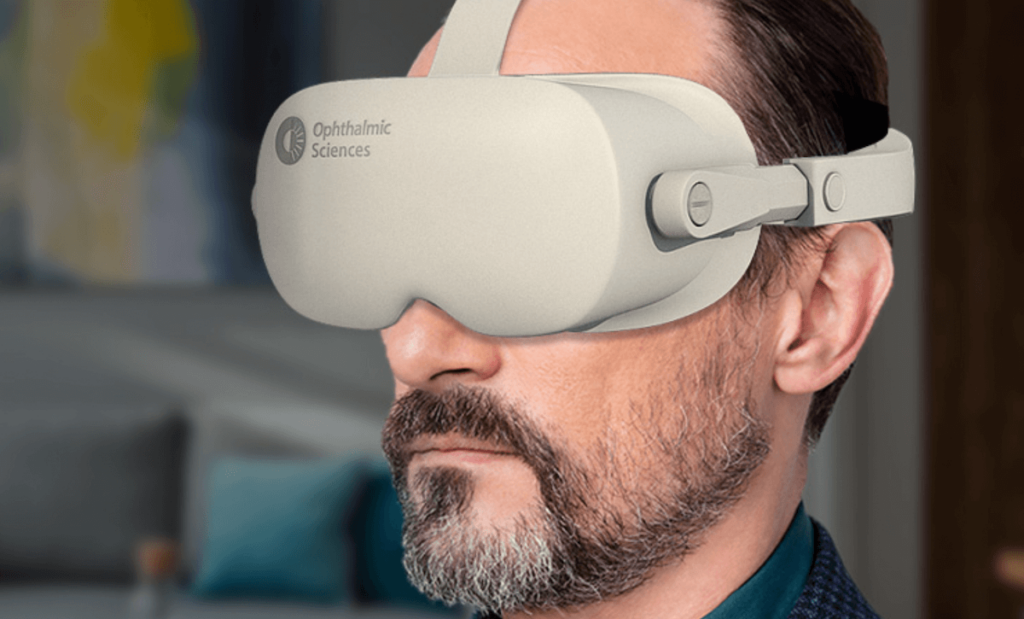Glaucoma is a serious eye condition that affects millions of people worldwide. It occurs when there is damage to the optic nerve, usually due to increased pressure in the eye. If left untreated, glaucoma can lead to permanent vision loss. However, thanks to advances in medical technology, there are now several surgical options available to treat glaucoma and prevent further vision deterioration.
Understanding Glaucoma: A Brief Overview
Before we delve into the specifics of glaucoma surgery and its costs, let’s take a moment to understand what glaucoma is and how it impacts eyesight.
Several factors can influence that how much does glaucoma surgery cost in australia. For instance, if you choose a more experienced and renowned surgeon, their fees might be higher compared to less experienced professionals.
Glaucoma is often called the “silent thief of sight” because it typically progresses slowly and without any noticeable symptoms in its early stages. This makes regular eye examinations crucial for early detection.
When left untreated, glaucoma can cause irreversible damage to the optic nerve, leading to a gradual loss of peripheral vision. In advanced stages, it can even result in complete blindness.

The Impact of Glaucoma on Eyesight
The impact of glaucoma on eyesight can vary from person to person. Some individuals may experience mild vision loss, while others may face more severe consequences.
Common symptoms of glaucoma include blurred vision, halos around lights, eye pain, and even nausea and vomiting in some cases. However, these symptoms are often not present until the condition has advanced significantly.
It is important to note that anyone can develop glaucoma, but certain factors increase the risk, such as age, family history, and certain medical conditions like diabetes.
Types of Glaucoma Surgeries
When it comes to glaucoma surgery, there are different types available, depending on the severity of the condition and the patient’s specific needs.
One common surgical procedure is trabeculectomy, which involves creating a new drainage channel in the eye to reduce intraocular pressure. Another option is minimally invasive glaucoma surgery (MIGS), which uses tiny incisions and implants to improve the eye’s fluid drainage.
Selecting the most appropriate surgery depends on factors such as the patient’s age, overall health, and the specific type of glaucoma they have.
Trabeculectomy: A Deeper Look
Trabeculectomy, a commonly performed glaucoma surgery, is designed to lower intraocular pressure by creating a new drainage channel in the eye. This procedure involves making a small incision in the sclera, the white part of the eye, and removing a small piece of tissue to create a new pathway for fluid to drain. Read more about drainage channel on https://www2.tulane.edu/~sanelson/eens1110/streams.htm
During the surgery, the surgeon carefully controls the amount of fluid that can escape through the new channel, ensuring that the intraocular pressure is reduced to a safe level. This helps to prevent further damage to the optic nerve and preserve the patient’s remaining vision.
While trabeculectomy is generally effective in lowering intraocular pressure, it is important to note that it is not a permanent solution. In some cases, the new drainage channel may become blocked over time, requiring additional interventions or surgeries.
Minimally Invasive Glaucoma Surgery (MIGS): A Less Invasive Option
For patients who prefer a less invasive approach, minimally invasive glaucoma surgery (MIGS) may be a suitable option. This type of surgery utilizes advanced techniques and devices to improve the eye’s fluid drainage without the need for extensive incisions or tissue removal.
MIGS procedures typically involve the use of tiny incisions and the placement of microstents or other implants to enhance the eye’s natural drainage system. By improving the outflow of fluid, MIGS can help reduce intraocular pressure and slow down the progression of glaucoma.
One of the advantages of MIGS is its relatively quick recovery time compared to more invasive procedures. Patients often experience minimal discomfort and can resume their normal activities within a short period after surgery.
However, it is important to note that not all patients are suitable candidates for MIGS. The decision to undergo this type of surgery should be made in consultation with a qualified ophthalmologist who can assess the patient’s specific condition and recommend the most appropriate treatment approach.
The Financial Aspect of Glaucoma Surgery
While the health benefits of glaucoma surgery are clear, it’s important to consider the financial implications that come along with the procedure.
Understanding the financial aspect of glaucoma surgery involves delving into various components that contribute to the overall cost of the procedure. From the initial consultation to the post-operative follow-up appointments, each step in the surgical process incurs its own set of expenses.
Average Cost of Glaucoma Surgery in Australia
The cost of glaucoma surgery in Australia can vary depending on several factors, including the type of surgery, the surgeon’s fees, and the location of the clinic.
On average, glaucoma surgery can cost anywhere from $2,000 to $5,000 per eye. This cost includes not only the surgical procedure itself but also the pre-operative and post-operative care.
It’s essential to recognize that the financial outlay for glaucoma surgery extends beyond the immediate post-operative period. Patients may also need to consider potential long-term costs associated with follow-up appointments, medication, and any additional treatments that may be required.
Factors Influencing the Cost of Surgery
The geographic location of the clinic can also impact the cost, as prices tend to be higher in metropolitan areas. Furthermore, the complexity of the surgery and any additional procedures or tests required can influence the final cost.
Patients should also consider the potential indirect costs of glaucoma surgery, such as transportation to and from the clinic, time off work for recovery, and any supportive care needed during the healing process. These additional expenses can contribute to the overall financial planning required for undergoing glaucoma surgery.
It is recommended to consult with your ophthalmologist or eye surgeon for a personalized estimate of the costs involved in your specific case.

Insurance and Glaucoma Surgery
One aspect that many individuals consider when contemplating glaucoma surgery is insurance coverage and the associated out-of-pocket expenses.
Understanding the role of health insurance in covering the costs of glaucoma surgery is crucial for patients seeking treatment. Health insurance policies in Australia typically cover a portion of the costs associated with glaucoma surgery, but the extent of coverage can vary greatly depending on the insurer and the specific policy.
Some policies may cover the entire cost of the surgery, while others may only reimburse a certain percentage. It is important to review your insurance policy carefully to understand what is covered and what out-of-pocket expenses you may still be responsible for.
Additionally, patients should be aware of the various factors that can influence insurance coverage for glaucoma surgery, such as the type of procedure being performed, the surgeon’s fees, and any additional services required during the treatment process.
Role of Health Insurance in Covering Surgery Costs
Health insurance policies in Australia typically cover a portion of the costs associated with glaucoma surgery, but the extent of coverage can vary greatly depending on the insurer and the specific policy.
Some policies may cover the entire cost of the surgery, while others may only reimburse a certain percentage. It is important to review your insurance policy carefully to understand what is covered and what out-of-pocket expenses you may still be responsible for.
Furthermore, patients should be proactive in contacting their insurance provider to inquire about pre-authorization requirements, coverage limitations, and any potential out-of-network fees that may apply. To learn more about limitations click here.
Out-of-Pocket Expenses for Patients
Despite insurance coverage, patients may still incur some out-of-pocket expenses when undergoing glaucoma surgery.
These expenses can include co-payments, deductibles, and costs associated with pre-operative consultations, post-operative medications, and follow-up visits. It is vital to factor in these expenses when considering the overall cost of the surgery.
Patients should also be aware of any potential financial assistance programs offered by hospitals or non-profit organizations that may help offset some of the out-of-pocket costs associated with glaucoma surgery.
Government Support and Subsidies
In addition to health insurance coverage, the Australian government provides various support programs and subsidies to assist individuals in accessing glaucoma surgery.
Glaucoma, a serious eye condition that can lead to vision loss if left untreated, often requires surgical intervention to manage effectively. Recognizing the importance of timely access to treatment, the Australian government has implemented several initiatives to support individuals in need of glaucoma surgery.
Medicare Benefits for Glaucoma Surgery
Medicare in Australia provides benefits for certain glaucoma surgeries, particularly for individuals with more advanced stages of the condition.
Under Medicare, eligible patients can receive rebates for a range of glaucoma procedures, including trabeculectomy and tube shunt surgery. These rebates help offset a portion of the surgical costs, making treatment more affordable for patients across the country.
It is important to note that while Medicare covers a significant portion of the expenses associated with glaucoma surgery, patients may still incur out-of-pocket costs depending on the specific procedure and healthcare provider.
Other Government Assistance Programs
Besides Medicare benefits, there may be other government assistance programs available to help individuals with the costs of glaucoma surgery.
For example, the Australian Government’s Department of Human Services offers additional subsidies through the Medical Benefits Scheme (MBS). These subsidies can help alleviate some of the financial burden associated with the surgery, ensuring that individuals have access to the care they need without facing overwhelming costs.
Moreover, certain state-based initiatives and non-profit organizations also provide financial aid and support services for individuals undergoing glaucoma treatment. These programs aim to ensure that all Australians, regardless of their financial circumstances, can receive timely and effective care for this potentially sight-threatening condition.
The True Value of Investing in Glaucoma Surgery
While glaucoma surgery may come with a significant financial cost, it is crucial to consider the long-term benefits and value it brings to one’s life.
Quality of Life Post-Surgery
Glaucoma surgery can improve the quality of life for individuals suffering from the condition. By reducing intraocular pressure and preventing further damage to the optic nerve, surgery can slow down or stop the progression of glaucoma, preserving eyesight and allowing for a better quality of life.
Furthermore, the positive impact of improved vision post-surgery extends beyond daily activities. Patients often report feeling more confident and independent, being able to engage in hobbies and social interactions they may have previously struggled with due to vision impairment. The emotional well-being that comes with restored eyesight is immeasurable and contributes significantly to an enhanced overall quality of life.
Long-Term Financial Savings from Early Treatment
Investing in glaucoma surgery early on can lead to long-term financial savings. By preventing vision loss and reducing the need for ongoing treatments, individuals can minimize the costs associated with managing advanced stages of glaucoma.
Moreover, maintaining good eyesight enables individuals to continue working and pursuing their careers, resulting in increased earning potential in the long run.
It is important to note that the financial benefits of early intervention go beyond personal savings. By preserving vision and independence, individuals may require less assistance and support from caregivers or healthcare services, reducing the overall burden on the healthcare system and society as a whole.
In conclusion, glaucoma surgery is undoubtedly a worthwhile investment in one’s eyesight. While the cost may seem daunting, the long-term benefits, improved quality of life, and potential financial savings make it a wise choice for individuals diagnosed with glaucoma. It is essential to consult with a qualified eye specialist and consider all the available assistance programs to make informed decisions regarding glaucoma surgery in Australia.
Read more about glacouma and retinal health at: Glaucoma and Retinal Health Surgical Interventions for Comprehensive Eye Care


